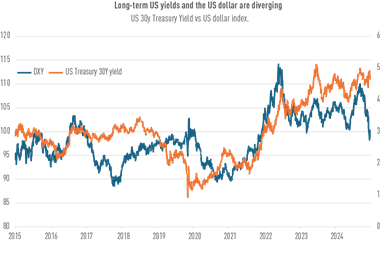The debate continues about the ability of sovereign investment funds to distort the international financial system, the different degrees of transparency applied and even the appropriateness of some of their investments. And yet, given all the fuss that is being made, it can be argued that the modern day sovereign investor is subject to more scrutiny than the more established funds had been previously. Unfortunately, scrutiny doesn’t equate to transparency and according to a disclosure index devised by the Washington-based Peterson Institute for International Economics, the China Investment Company falls well short of agencies such as Temasek and GIC, on which it is supposedly modelled.
Transparency and accountability were the key battlegrounds on which the recent IMF-inspired Santiago Principles were thrashed out. That it has been necessary to draw up rules and codes of conduct for the behaviour of sovereign investors has come about largely because of the rapid increase in their assets in this decade. The strategic investment activity of the Abu Dhabi Investment Authority (ADIA) buying a stake in Citi, Singapore’s GIC buying into UBS and Citi, Temasek buying into Merrill Lynch and China’s CIC buying into Morgan Stanley, made policymakers in the west uneasy.
Just how much influence can these institutions have? Currently, central bank international reserves total US$6 trillion. It is estimated that at least another $3 trillion is held by the sovereign funds, the largest of which are detailed in the table on this page. By 2011, according the report on SWFs issued by Merrill Lynch, sovereign wealth funds will hold assets equivalent to about 12% of global GDP. Perhaps more significantly, Merrill predicts “the share of SWFs in riskier global assets will double or triple by 2011”. In pure number terms, this means that $3- 6 trillion is likely to be invested in capital markets over the next five years.
Unless the credibility of international capital markets as creators of value has been totally shattered by recent events, it is fair to assume that over time the collective asset allocation for an SWF will be 60% equities, 30% bonds and 10% alternatives. SWFs are expected to reduce their incremental purchases of US Treasuries, sell a portion of their existing Treasuries and reallocate to global equities and bonds according to world market weightings. US real yields would naturally rise as result.
Estimates of the size of the world’s capital markets vary. An average of figures compiled by McKinsey, Goldman Sachs and Merrill Lynch places the total stock of investible global equities at about $33 trillion, global government bonds at $21 trillion and private sector bonds at $24 trillion. SWFs currently control $3 trillion and are projected to invest $5 trillion in the next five years. If today, they were to collectively allocate 60% of this capital to the MSCI All Country World Index, they would own about 5% of each company in the index. If they do, over time, allocate 60% of their assets into equities, there is scope for the equity risk premium to fall and for real bond yields to rise. It is fair to assume that in the medium term, at the very least, their allocations are likely to be supportive of equity valuations.
In the longer term, is there potential risk that they can distort capital markets? What if they stray from the traditions of passive investing? Where do the boundaries lie? Hon Cheung is Regional Director for Asia at State State Global Advisers and is part of the company’s Official Institutions Group (OIG). He says: “Let’s imagine you have a fund with $300bn and you want to put all of that into equities. That figure represents approximately 1% of the total capitalisation of the MSCI World Index. If the $300bn is applied in a passive manner, you are buying 1% of the companies in each country. However, if the money is deployed actively to a level of plus or minus 1% that will create distortions. In Japan, an overweight of $300m in Toyota is possible. But for a company like Goodwill, the smallest Japanese component of the MSCI World, that would represent 90% of its share capital. So taken to that extreme, obviously major sovereign investors have the potential to distort or dominate a market.”
Cheung says the challenge for the future is asset class diversification and capacity constraints: “Each investment type will face its own capacity issues. All of them will be utilised in this new world order. The challenge is for them to understand not only the asset classes but the risk characteristics of each combination. We are beginning to see a lot of interest in emerging debt and equity. Infrastructure is clearly something that is ideally suited to some sovereign funds. If we take China as an example, the Government’s policy priority is to rebalance the economy away from export-oriented investment towards domestic consumption and infrastructure development. This dynamic is also taking place, although less smoothly, in India.”
As to whether it is appropriate for sovereign funds to be able to buy another country’s strategic assets, Cheung says,: “Any asset owner has a duty and a right to apply those assets as they see fit and in accordance with their own objectives. The spotlight has only fallen on sovereign funds because we have seen a sharp increase in the type of transaction that falls with the definition of an opportunistic trade. Put in the context of the unprecedented series of events we have seen in world markets -any investing institution would be remiss in ignoring the opportunities for them to participate.”
The set of Generally Accepted Principles and Practices (GAPP), signed up to by 26 sovereign wealth funds is a voluntary framework to guide the conduct of appropriate investment practices, as well as governance and accountability arrangements, of SWFs. The Santiago Principles cover the legal, institutional, and macroeconomics of each sovereign wealth fund; its governance and accountability arrangements and investment policies and risk management. The intention is that recipient countries and others in the investment markets can get a good idea of the type of investors that they will meet in the market.
There has been a suggestion that perhaps SWFs should adopt practices that go beyond the rules that apply to hedge funds. SSgA’s Cheung says: “The question investors need to ask is, do these funds have additional duties to acknowledge that the market has an interest in understanding what they are doing?” David Murray, chair of Australia’s Future Fund, who was involved in the Santiago accord remarked: “A lot of the discussion focused on the need to preserve the economic and financial interests of the sovereign wealth funds so as not to put them at a disadvantage. Disclosure is important, but as with any other institutional investor, there must be a limit which protects confidentiality of dealings for sovereign wealth funds and their counter parties.”
It is fair to say the sovereign investors didn’t take too kindly to being subjected to suggestions that they were nothing more than imperialist asset strippers. The fact that 26 of them were willing to sign up to the GAPP is quite a turnaround from the situation earlier this year. As Professor Daniel Drezner describes in his recent paper, ‘The Emergent Regime for Sovereign Wealth Funds’: “In April, the managing director of the Kuwait Investment Authority said, “Recipient countries are placing handcuffs on sovereign funds in the form of regulations, termed in the best tradition of George Orwell’s Newspeak codes of conduct or principles of operation. There should be limits placed on transparency. Complete transparency would raise more questions than it answers.” In the same vein, Gao Xiqing, president of the China Investment Corporation, said that an IMF code would “only hurt feelings” and characterised the idea as “politically stupid.” In June he was more blunt, describing the process as “political bullshit.”
As State Street’s report comments: “The arguments in favour of SWFs being more transparent have often seemed somewhat simplistic and have ignored the long history of these official bodies operating with minimal fuss and yet in harmony with markets and other market participants.” Indeed, how is Temasek taking a stake in Merrill different from Warren Buffett buying into Goldman Sachs?
The problem for government policymakers is they are asked to assume that, with their presence now much more widely felt, SWFs are a force for good. Cheung suggests the larger asset owners “can really have a broadly positive impact. They have helped quite a few companies out of trouble in recent times. And by taking a long term stake, that will allow these companies to rebuild.” Not everyone is going to agree with this assumption, though, so it is reasonable to accept a degree of scepticism.
It is difficult to know the internal dynamics of a sovereign fund, and this is part of the concern about governance. A set of principles cannot hope to regulate the activities of an organization that does wish to behave accordingly. The IMF describes the proposed code of conduct as “a voluntary document, which the members support and either adhere to, or aspire to implement.” All very worthy but let’s be honest, not exactly a binding set of rules. Drezner suggests it is unclear whether a tripartite agreement between the United States, GIC and ADIA will have any affect. “Despite the agreement and other public pledges, there has been little observed change in their transparency scores. Russia’s leaders have gone so far as to claim that they do not even have a sovereign wealth fund.”
Obviously, the concern from the point of view of the fund itself is that it is able to do its work without undue interference or prior knowledge of its intentions. Cheung says, “Governments have a right to determine their investment goals and to let their managers go out and execute that policy. Interference can prevent the efficient delivery of this objective.” On a positive note, he adds that there is now much greater acceptance of the benefits of good governance. “In Asia, there has been a willingness to understand the issues. Regional lobbyists such as ASrIA have been quite influential. Institutions have a better understanding that corporate governance improves their bottom line and that a sovereign fund with a strategic presence can have a great and positive influence.




























No comments yet